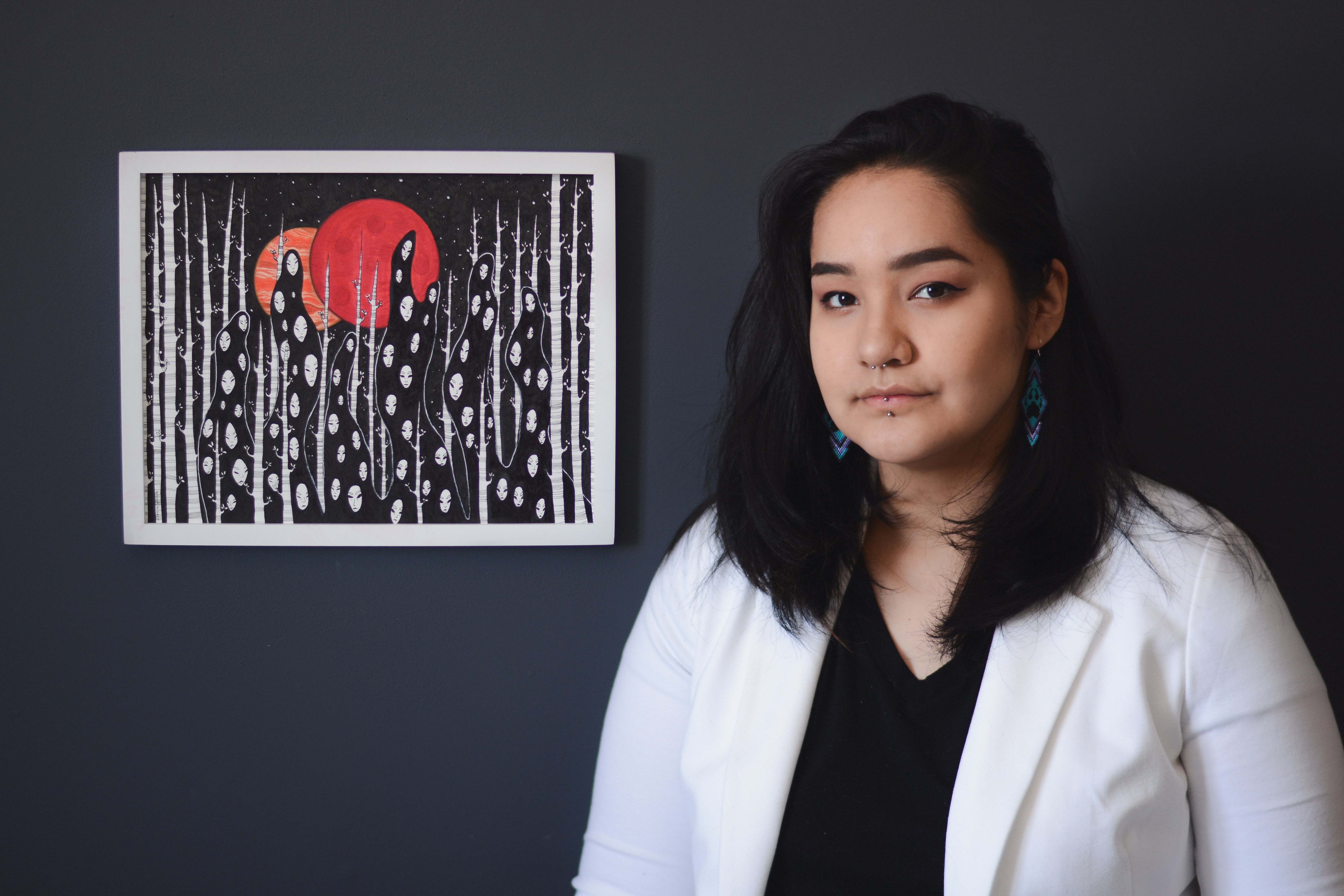A young Cree artist speaks about her budding business and aspirations for the future
While homemade jewelry and ink-based artworks might not be an unheard of business idea, not many can say their orders are flown out of Quebec’s northernmost Cree community.
Saige Mukash, a 20-year-old Cree woman, calls her business Nalakwsis—the middle name her Abenaki grandmother gave her in her native language. Nalakwsis products include ink drawings, digital artwork, beaded jewelry and embroidered works, all hand-made by Mukash herself. While she is a creative woman by nature and always enjoyed making pieces with her hands, Mukash only recently chose a more organized, business-oriented path.
“I chose ‘Nalakwsis’ as my official business title about a year ago, but I’ve been serious in my work for the past two years now,” Mukash explained. Though, what is now a profitable business first started out as a passionate hobby.
Mukash attended F.A.C.E. School in the heart of downtown Montreal, where she was able to exercise her artistic abilities and express herself through various mediums in an organized classroom setting. However, it was returning to her Cree community up north that had the biggest effect on her. “My art really blossomed when I came to Whapmagoostui to reconnect with my Cree culture,” she said.
Not long after, Mukash created a Facebook page where she could post photos and descriptions of her art pieces; a sort of headquarters for all her works. As people began to show interest in buying her pieces, Mukash realized she would have to take further steps to establish her business. She created two online shops where anyone in Canada with access to a credit card could purchase her artworks.
It was then that Mukash knew she was in business. While she still lives with her parents and two siblings in their home in northern Quebec, Mukash found a way to create her own workspace in her spatially limited environment. She has a small studio space in her home where she crafts all her pieces, packages and ships them.
In the past month alone, Mukash has made over $1,000 in sales, and spends an average of $200 on supplies per month.
However, living three hours away from Montreal by plane is becoming more and more of a problem. Due to her isolated location, Mukash must order all of her supplies online. “It’s getting very hard to be able to buy supplies online. Shipping is getting very expensive for my community, which is a fly-in only community,” she said.
Not only are all of Mukash’s supplies located hours away, so are the majority of her customers. Shipping fees are added onto every sale she makes. Yet, while these obstacles are present in the young artist’s day-to-day plans, she is not letting them slow her down.
“I think my first long-term goal for my business is owning a studio here in my hometown,” Mukash said. “It’s a struggle for anyone here to own their own business because everything is under the Band Office. You can’t just go and sign a lease for an apartment.”
“My own studio space is what I’m saving up for,” she said. “That’s what I’m aiming for.”
For more information about Saige Mukash, visit her Facebook page or website.
Photos courtesy of Saige Mukash
